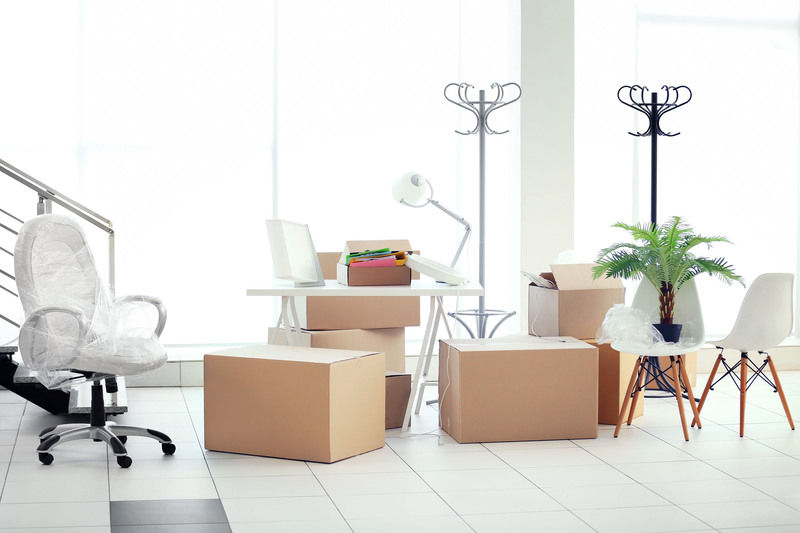Stress-Free Packing Techniques for House Moves
Posted on 25/05/2025
Stress-Free Packing Techniques for House Moves
Moving house is often listed as one of life's most stressful events. Between packing up your entire home, managing logistics, and preparing for a new chapter, it's easy to feel overwhelmed. The good news? With the right packing techniques, your house move can become a smooth and manageable process. This comprehensive guide provides stress-free packing techniques for house moves to help you stay organized, protect your belongings, and move with confidence.
Why Plan Your Packing for a House Move?
Before diving into the actual packing process, it's essential to understand why careful preparation is key. Poorly planned moves lead to misplaced items, wasted time, and unnecessary stress. Deliberate preparation ensures:
- Minimal disruption to your daily life
- Protection for fragile or valuable items
- Smoother transitions in your new home
Approaching your move with an organized mindset is the first step towards a stress-free experience.

Start Early: The Golden Rule in Stress-Free House Packing
If you ask anyone who's moved successfully, they'll agree: The earlier you start, the less stressful your move will be. Cramming your entire home's belongings into boxes at the last minute is a recipe for chaos. Instead, follow these early-bird strategies for an organized and stress-free house move:
- Set a packing timeline as soon as your move is confirmed.
- Begin with rooms and items you rarely use, such as attic or seasonal decorations.
- Pack a few boxes each day to avoid exhaustion and overwhelm.
Decluttering Is Essential: Pack Less, Stress Less
Before you even tape up the first box, take time to sort through your belongings. Moving is the perfect opportunity to declutter and downsize. Follow these decluttering tips:
- Evaluate every single item--if you haven't used it in a year, it's time to donate, sell, or toss it.
- Hold a garage sale or use online platforms to sell unwanted goods.
- Donate clean, usable items to local charities.
- Recycle or responsibly dispose of broken or obsolete items.
Decluttering reduces what you need to pack and unpack, saving time, energy, and moving costs.
Gather the Right Packing Supplies
High-quality packing materials ensure your possessions remain safe during transit. Here's a comprehensive checklist of packing supplies you'll need for a stress-free house move:
- Sturdy boxes in various sizes (small, medium, large, and specialty boxes for fragile items)
- Bubble wrap and packing paper to cushion delicate objects
- Packing tape and dispensers for strong seals
- Permanent markers and colored labels for easy identification
- Scissors or box cutters
- Furniture blankets or stretch wrap for large pieces
- Ziplock bags for small parts and hardware
- Plastic bins for storage and ultimate protection
Tip: Never overfill boxes--too much weight can cause boxes to burst and possessions to break during your house move.
Packing Room by Room: The Systematic Approach
One of the best packing techniques for house moves is to work room by room. This keeps you organized and makes unpacking easier. Here's a chronicled approach to help ensure stress-free packing for house moves:
Start With Non-Essential Areas
- Attic and basement: Pack away anything you're storing that you won't need soon.
- Spare rooms and closets: Tackle rooms that aren't in daily use first.
- Bookshelves and decorative items: These can be packed weeks in advance of your move.
Move On To Frequently Used Rooms
- Bedrooms and closets: Save only what you need until moving day. Pack clothing in suitcases for easy transport.
- Kitchen: Set aside essential cookware and utensils, pack the rest. Use towels to cushion glassware and fragile dishes.
- Bathrooms: Pack extra toiletries and linens; leave essentials for last-minute packing.
Pro tip: Label each box with its room, contents, and priority (e.g., "Kitchen - Glassware - Unpack First"). This makes it much easier to organize upon arrival.
Expert Packing Techniques for House Moves
Besides staying organized, the actual technique you use to pack your items is important. Let's explore how to pack efficiently and protect your possessions for a stress-free house move:
1. Use the Right Box for the Job
- Heavy items like books should go in small boxes to prevent them from becoming too heavy.
- Lightweight items can fill larger boxes without risk of damage or injury during lifting.
2. Wrap and Cushion Fragile Items
- Use bubble wrap or packing paper to individually wrap dishes, glasses, and electronics.
- Fill empty spaces in boxes with crumpled paper, towels, or clothing to minimize movement.
- Label fragile boxes clearly on all sides for easy identification by movers.
3. Pack Vertically
- Dishes should be packed on edge, not flat. This reduces the risk of breakage during your move.
- Stand bottles upright and ensure they are tightly sealed.
4. Group Items by Category
- Keep similar items together (e.g., office supplies, kitchen utensils, electronics cables) in labeled boxes or bags.
- Use ziplock bags for small parts like screws, bolts, and remote controls. Tape the bag to the item it belongs with.
5. Create an Inventory List
- List the contents of each box in a notebook or smartphone app.
- Number each box for quick reference and tracking during your house move.
With these expert packing techniques, every box you pack will be secure, manageable, and easy to locate once you arrive at your new home.
Use Smart Packing Hacks for Stress-Free Moving
Packing smarter--not harder--can truly reduce the headache of moving. Here are some innovative packing hacks for a stress-free house move:
- Leave clothes on hangers: Bundle a group with a garbage bag for easy transport and re-hanging.
- Cut handles in boxes: For heavy boxes, cut small handholds on each side to make them easier to lift.
- Take photos before disassembling electronics: This helps you remember how to reconnect everything.
- Pack an "essentials" box: Fill one box with necessities for the first night (toiletries, snacks, chargers, bedding).
- Utilize suitcases and laundry baskets: These sturdy containers can double as moving bins for clothes or books.
- Color code your boxes: Use colored tape or stickers for each room to easily direct movers (or friends!) at your new place.
Every minute you invest using these hacks saves time during both packing and unpacking, creating a truly stress-free moving experience.
Label Like a Pro for Stress-Free Unpacking
Thorough labeling is one of the most overlooked yet vital stress-free packing techniques for house moves. A clear labeling system helps you--and your movers--place boxes in the correct location, reducing not only confusion but wear and tear as you settle in. Here's how to do it right:
- Label all sides of the box: Not just the top! This ensures you can identify each box's destination at a glance, no matter how they are stacked.
- Be specific: "Kitchen - Pots & Pans - Unpack First" is far better than just "Kitchen."
- Use color coding: Assign a color to each room and mark boxes accordingly.
- Number your boxes: This lets you check each item off your inventory during the move.
- Mark priority boxes: Clearly indicate which boxes have essentials to be opened first.
Don't Forget the Essentials Box!
No matter how well you pack, there are items you'll need immediately at your new home. Avoid stress by preparing an "Essentials Box" for each family member. Items should include:
- Toiletries and medications
- Phone chargers and basic electronics
- Snacks and bottled water
- First-night bedding and towels
- Paper plates, cups, and utensils
- Important documents and valuables
This single step ensures your first night is comfortable and organized, truly making your house move stress-free.
Coordinate Professional Help for a Seamless Move
Sometimes the greatest stress-reliever is hiring professional movers. They can provide packing materials, trained staff, and logistics expertise. Here's how to get the most out of a moving company for a stress-free house move:
- Book well in advance, especially during peak moving seasons.
- Communicate any special requirements or fragile items.
- Request a written estimate to avoid any surprise charges.
- Ensure the company is fully licensed and insured.
- Review the company's inventory and labeling systems--many offer their own to track your belongings.
Tip: Even with professional movers, following the above stress-free packing techniques will make the process easier and lower your costs.

How to Stay Calm and Manage Stress During Your House Move
Even with perfect planning, moving can feel emotionally taxing. Here are some practical tips to keep your cool and make your house move as stress-free as possible:
- Stick to your packing schedule to prevent last-minute panic.
- Delegate tasks--get family and friends involved.
- Take breaks, stay hydrated, and don't skip meals on packing days.
- Keep your eyes on the exciting new chapter your move represents.
- Consider short-term storage if your moving-in dates don't align; it prevents feeling rushed or flustered.
Stress-Free Packing Techniques for House Moves: Final Thoughts
While moving house can feel daunting, smart packing techniques and preparation make all the difference. By starting early, staying organized, using the right supplies, and deploying clever hacks, you can transform the moving process from a source of stress into an opportunity for a fresh start.
Remember: Label every box, pack methodically, and don't hesitate to ask for help. Whether you're moving across town or across the country, following these stress-free packing techniques for house moves ensures your belongings arrive safely--and you do too, with peace of mind.
Here's to a smooth, simple, and happy move!



